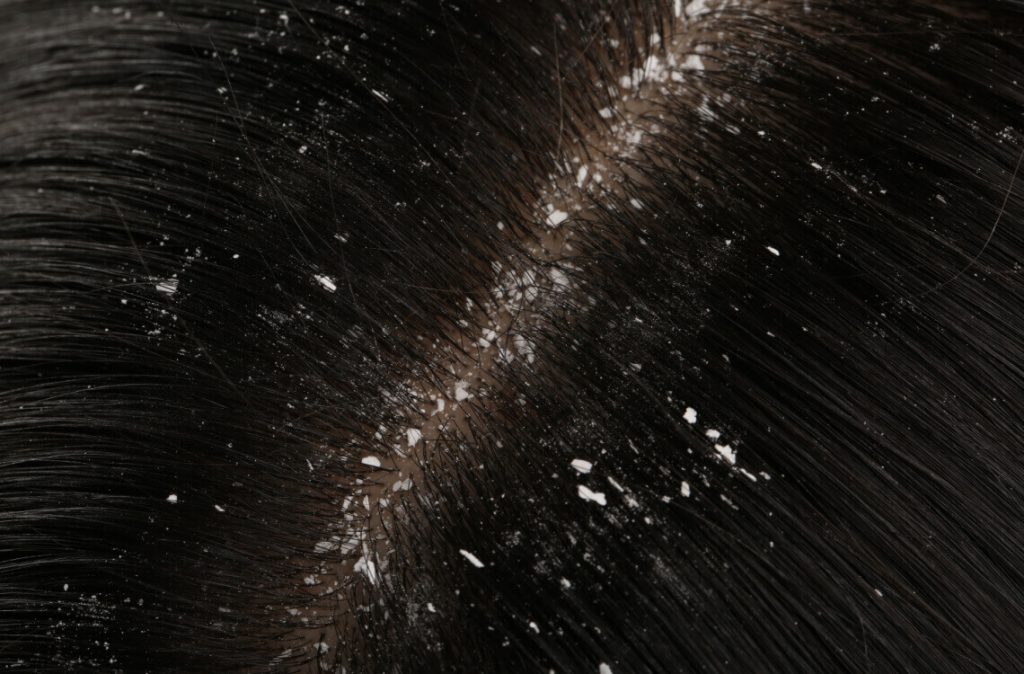At first glance, people might think that’s snow on your child’s shoulders. But the itching in their scalp is a sign of something else.
We often think only adults suffer from dandruff, but kids have to deal with them too.
We sat down with Nazatul Amira Hamzah from Primabumi Sdn Bhd to learn more about childhood dandruff and what parents can do to fend off the flakes.
Nazatul is a qualified pharmacist with 10 years of experience in pharmacy practice involving both hospital and community settings.
She currently holds the position of Pharmacist and Key Account Manager at a renowned pharmaceutical company in Kuala Lumpur.
Here’s what a pharmacist has to say about those pesky white flakes.
Question 1: My child has been complaining of an itchy scalp with small, white flakes. It doesn’t seem to go away with frequent washing. Can you tell me what this is?
Your child is most likely suffering from dandruff.
The symptoms are pretty common for both adults and children.
White flakes of dead skin on the shoulders and in the hair. Dry and itchy scalp. Rough, red, or crusty patches on the scalp.
These are all tell-tale signs of someone suffering from dandruff.
Question 2: I’ve always assumed that dandruff can only happen in adults. Can a child get it too?
Yes. Children can get dandruff, too. The condition is rare in babies, but it can occur in people of all ages.
Dandruff typically appears around puberty or adolescence in children. This happens when oil glands start to become more active.
Question 3: What causes dandruff in children?
It takes two ingredients to make dandruff in children.
First is sebum, and the next is fungal overgrowth.
Dandruff is more likely to happen when your child’s scalp produces too much oil or sebum. This is known as seborrhoeic dermatitis.
A type of fungus that grows naturally on human skin known as Malassezia loves to feed on sebum.
When excess sebum is produced, the fungus multiplies.
As a result, the scalp’s cells to shed too quickly, causing dry skin and eventually resulting in dandruff.
Question 4: Is dandruff contagious?
Fortunately, dandruff is neither harmful nor contagious.
Therefore, your child did not get it from another person be it child or adult.
If they’re suffering from dandruff, they will also not spread the condition to someone else.
Question 5: Are dandruff and cradle cap the same?
No, they aren’t. Cradle cap only appears in small children and younger babies, whereas dandruff is typically seen in older children.
Dandruff manifests as dry, flaky, and itchy white flakes only on the scalp.
On the other hand, in cradle cap, you might notice greasy, yellowish crusts on your baby’s scalp, eyebrows, and nappy area.
Cradle cap requires a different treatment than dandruff.
Question 6: How do I get rid of my child’s dandruff?
First, if your child has mild dandruff, make sure you’ve ruled out any other skin condition.
Then, use a gentle comb to brush away any large flakes of dry skin.
Finally, wash your child’s hair with a mild shampoo to remove any excess dry skin flakes that may be lingering on their scalp.
This should hopefully prepare them for a flake-free day.
Question 7: I’ve tried the above steps but the dandruff doesn’t seem to go away, and my child keeps on scratching. What should I do?
You can control your child’s dandruff by using a medicated anti-dandruff shampoo. Seek advice from your doctor or pharmacist on which product suits your child’s age.
Question 8: After my child’s dandruff completely goes away, is there a chance that it will return?
Yes, unfortunately. Stress, cold and dry air can cause dandruff to return.
Covering the head too often such as when wearing hats or caps, as well as allergies to some hair care products can also possibly triggers a dandruff return.
To make sure recurrence doesn’t happen, make sure your child washes their hair and cleans their scalp regularly.
Get them the right haircare product to help prevent the return of their dandruff.
Question 9: When should I bring my child to the doctor?
You’re strongly advised to consult a doctor if your child’s dandruff doesn’t improve after 2 to 3 weeks of treatment.
Another sign that medical attention may be needed is if they also develop thick, scaly patches on their scalp.
Your doctor needs to determine if your child suffers from scalp psoriasis.
Take them to the clinic as well if they keep on scratching their scalp despite treatment. Especially if they start showing red, itchy, and/or flaky skin in areas other than the scalp.
Disclaimer: The information provided in this article is for informational purposes only and should not be considered as medical advice from Motherhood. For any health-related concerns, it is advisable to consult with a qualified healthcare professional or medical practitioner.
For more insightful stories and fun recipes, stay tuned to Motherhood Story!
